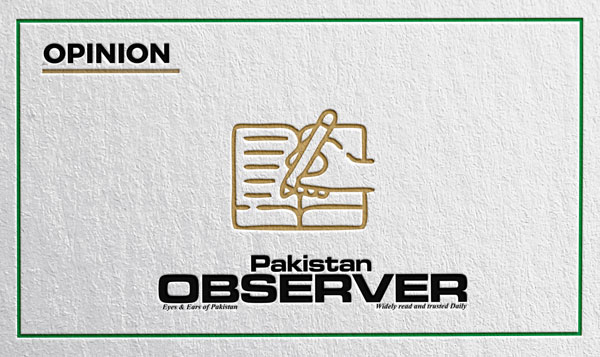Articles and letters may be edited for the purposes of clarity and space.
Pakistan’s heat battle
Heat-waves are becoming more frequent and intense due to climate change. These events, caused by high-pressure systems trapping heat and rising global temperatures, pose severe threats to health, ecosystems and economies. In Pakistan, the situation is dire. Health impacts include heat exhaustion, heatstroke and exacerbation of chronic conditions, with vulnerable populations at greater risk. Those without air conditioners, particularly during load shedding, face severe heat-related illnesses due to prolonged exposure to high temperatures.
Environmentally, heat waves in Pakistan can lead to droughts, reduced water supplies and increased wildfire risks, while also disrupting ecosystems. The agricultural sector, crucial to Pakistan’s economy, suffers from reduced crop yields, threatening food security. Water scarcity further exacerbates the situation, making it difficult for communities to access sufficient water for drinking and irrigation.
Economically, heat waves strain energy systems due to heightened demand for cooling, leading to blackouts and increased energy costs. Mitigating and adapting to heat waves involves several strategies. Urban planning can incorporate green infrastructure like parks and green roofs to mitigate the urban heat island effect, while reflective materials can reduce heat absorption. Public health measures such as cooling centres, hydration access, and awareness campaigns are crucial for protecting vulnerable populations. However, taxation on solar energy solutions hinders their adoption, despite their potential to provide relief. In agriculture, adopting heat-resistant crops and efficient irrigation practices can maintain productivity.
Addressing the root cause of increasing heat waves requires global efforts to reduce greenhouse gas emissions through renewable energy transitions, improved energy efficiency, and supportive policies. By understanding heat waves and implementing these strategies, Pakistan can better protect its health, environment, and economy from their devastating impacts, creating a more resilient and sustainable future.
Royyam Saqib
Islamabad
Traffic woes
I am writing to draw attention to an issue that affects our streets, roads, and highways daily: Pakistan’s traffic problems. In a nation where modern cities mix with old streets, traffic noise has become an urban symbol. However, this noise often highlights ongoing traffic congestion issues.
Rapid urbanization and population growth in Pakistani cities have led to overcrowded road networks and poor public transit systems. Traffic jams are a regular nuisance in major cities like Karachi, Lahore, and Islamabad, causing wasted time, increased fuel consumption, and elevated pollution levels. A significant cause of these jams is the lack of infrastructural development and urban planning. Roads originally designed for fewer vehicles are now overwhelmed by cars, motorbikes, and rickshaws.
The problem is exacerbated by inadequate public transportation, forcing commuters to rely on private vehicles. This reliance perpetuates a cycle of congestion, with more cars on the road worsening the situation. Authorities must take comprehensive measures to combat traffic congestion, such as expanding road networks, implementing advanced transport systems, and promoting walking and cycling. Public awareness campaigns encouraging safe driving and reducing single-occupancy car use can also help.
Addressing root causes like insufficient parking and ineffective traffic management is crucial. Utilizing modern technologies to streamline traffic flow and designating lanes for public transportation can reduce congestion and improve mobility. Additionally, promoting carpooling and incorporating sustainable options like electric buses can lessen environmental impact while easing traffic. Embracing smart city concepts and data analytics to optimize traffic flow can further enhance urban transport efficiency.
Solving Pakistan’s traffic problems requires coordinated action from the public, government agencies, and urban planners. With a comprehensive strategy prioritizing efficiency, Pakistan can transform its chaotic traffic system into a smooth and exciting urban mobility experience for all.
AZAN NADEEM
Islamabad
Box letter
Child labour
Child labour is one of the most pressing issues in Pakistan, with the country ranking third globally in child labour prevalence. According to the Research Society of International Law (RSIL), about 12 million children are victims of child labour in Pakistan. The United Nations Children’s Fund (UNICEF) reports that around 3.3 million Pakistani children are trapped in child labour, deprived of their childhood, health, and education. Children in all provinces of Pakistan face exploitation—physically, morally and socially. The Asia Regional Child Labour (ARC) project revealed that in 2020, approximately 160 million children aged 5 to 17 were engaged in child labour worldwide, with 79 million involved in hazardous work. Key causes of child labour include illiteracy, poverty, the increasing cost of education and weak enforcement of labour laws. Economic pressures force many children to contribute their income to their families, perpetuating the cycle of poverty and forced labour. To combat child labour, global organizations like the International Labour Organization (ILO) and Pakistan’s leading child rights organization, the Society for the Protection of the Rights of the Child (SPARC), must work together. The government should also take steps to reduce poverty, ensuring that parents are not forced to send their children to work.
MOIN AHMED AWAN
Kandhkot Sindh










